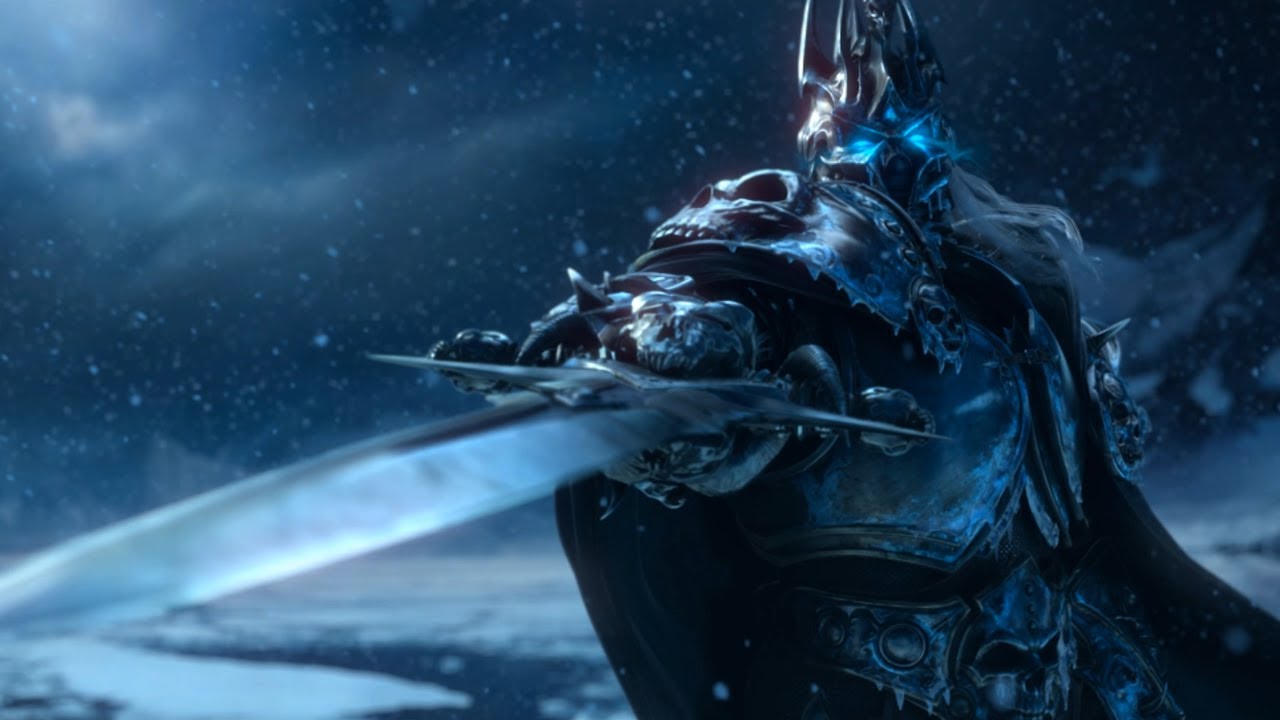Every hero needs a good villain. When it comes to World of Warcraft villains, they need to be strong enough to withstand the might of the mighty Champions of Azeroth. Some have lived up to their hype and potential, leaving a lasting impression on WoW fans. Others have fallen short and become completely forgettable, even while their boss encounter was current content.
While the recent Warcraft lore has fallen by the wayside, the franchise is still rich with remarkable storytelling, fantastic heroes, and sinister villains. In that vein, we will rank the major World of Warcraft villains from worst to best. There are a lot of enemies from every World of Warcraft expansion.
To highlight each of them would mean we’d be here all day. Therefore, we will highlight some essential big baddies from every expansion. Before you ask, yes, that means there will be some cherry-picking; vanilla World of Warcraft didn’t have a main villain, but there were still plenty throughout the game’s experience.
As always, this list of the opinion of myself, the author. I’m also taking into account what they did within the events of World of Warcraft. Some of these villains did many things before the in-game events ever took place. That’s pretty neat and interesting, but it also didn’t necessarily mean much for the Champions of Azeroth.
Honorable Mention: Queen Azshara
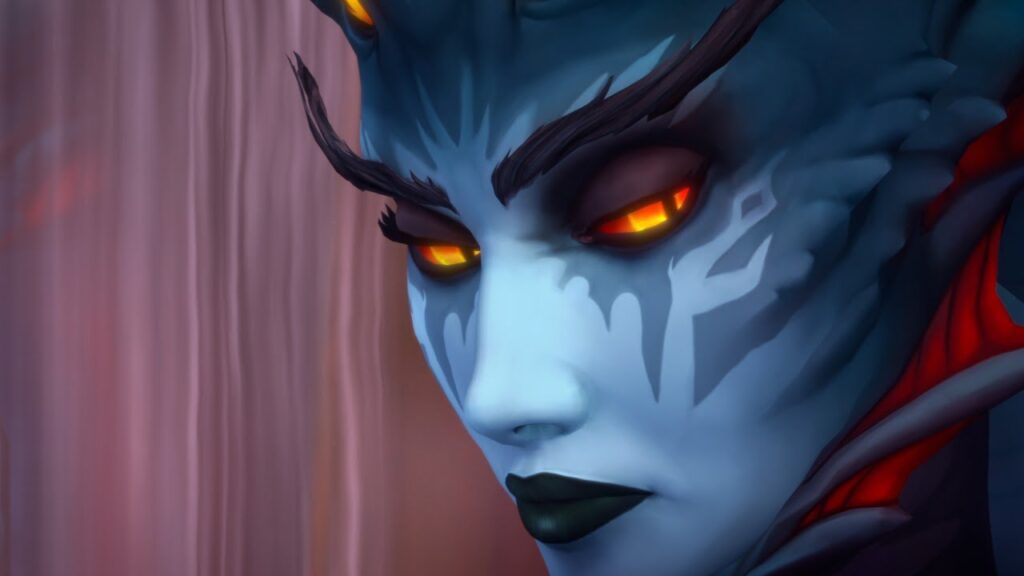
Many World of Warcraft fans have eagerly awaited Queen Azshara, one of the franchise’s most iconic villains. She has been hinted at throughout the history of World of Warcraft before making a debut in Battle for Azeroth. Azshara is even the final boss for the Patch 8.2 raid, The Eternal Palace.
Yet as quickly as she arrived, Azshara was gone. She assists the Champions of Azeroth in defeating N’Zoth before proclaiming she’ll claim the “true throne of power” as she disappears into the Void, ready to return in a future expansion.
The Jailer
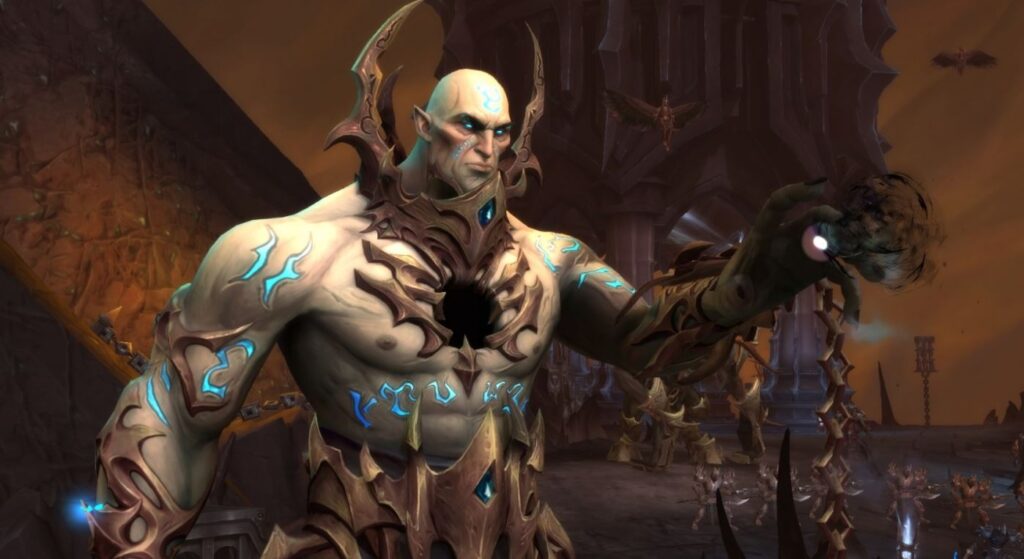
One of the most recent World of Warcraft villains is also the worst. The Jailer is another attempt by Blizzard in creating a villain whose actions are evil despite the desire to help the greater good. His motivations are similar to Thanos: remake reality to prevent the cosmos from an even more significant threat.
The problem is that The Jailer lacks personality, character development, or a reason for anyone to care. He was introduced and defeated in under two years. Had Blizzard spent the time indicating that Sylvanas was acting on behalf of the jailer during the events leading up to and in Battle for Azeroth, things could have been different. If we were aware of The Jailer’s true intentions from the start, things could have been different.
Blizzard didn’t need to make things evident from the get-go. To bring Thanos back into the conversation again, he hides in the shadows for a while before getting his time in the spotlight. From a writing perspective, it feels like The Jailer was retroactively written into things instead of being planned from the very beginning. Are there a lot of threads that tie back into his influence? Yes, but they are introduced retroactively instead of being heavily hinted at.
Archimonde
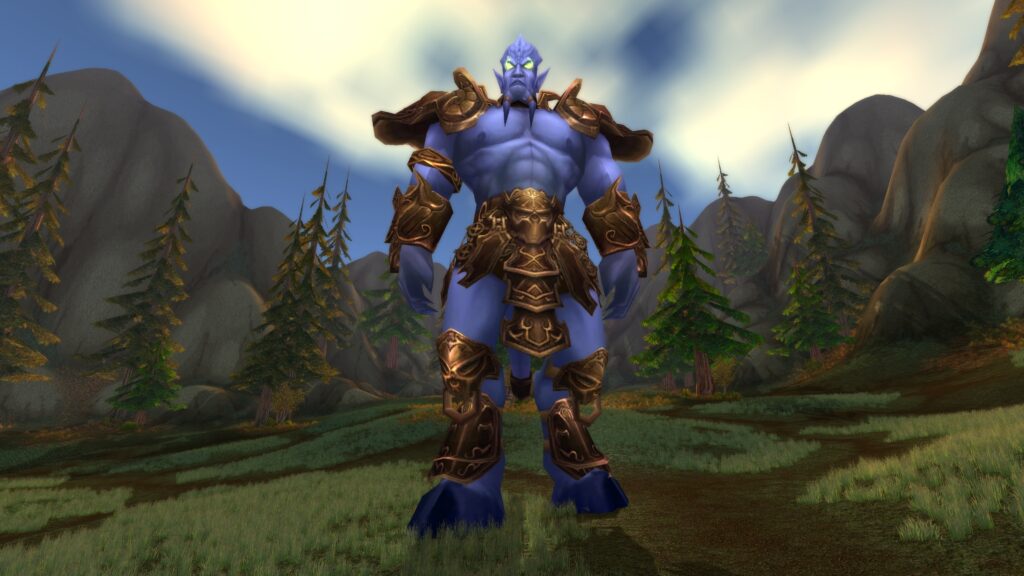
It’s honestly difficult to assess Archimonde in a list of World of Warcraft villains.
We first encounter him during the Battle for Mount Hyjal raid in Burning Crusade. For those that don’t know, the raid takes place in the past as a homage to the events in Warcraft III. Eventually, we meet Archimonde again in the Warlords of Draenor expansion, which takes place in the past, as we battle against the Burning Legion and eliminate them once and for all in the Legion expansion.
Archimonde is an important character in the Warcraft franchise. Still, for World of Warcraft specifically, he feels more like a character trout out for nostalgia or as a stepping stone to bigger things. His presence in Warlords of Draenor has a larger purpose; he was overseeing the invasion of Draenor and took the battle to the planet on his own terms, not Kil’jaedens. Still, it’s difficult for Archimonde to hold his own against other World of Warcraft villains regarding the MMO specifically.
Lady Vashj
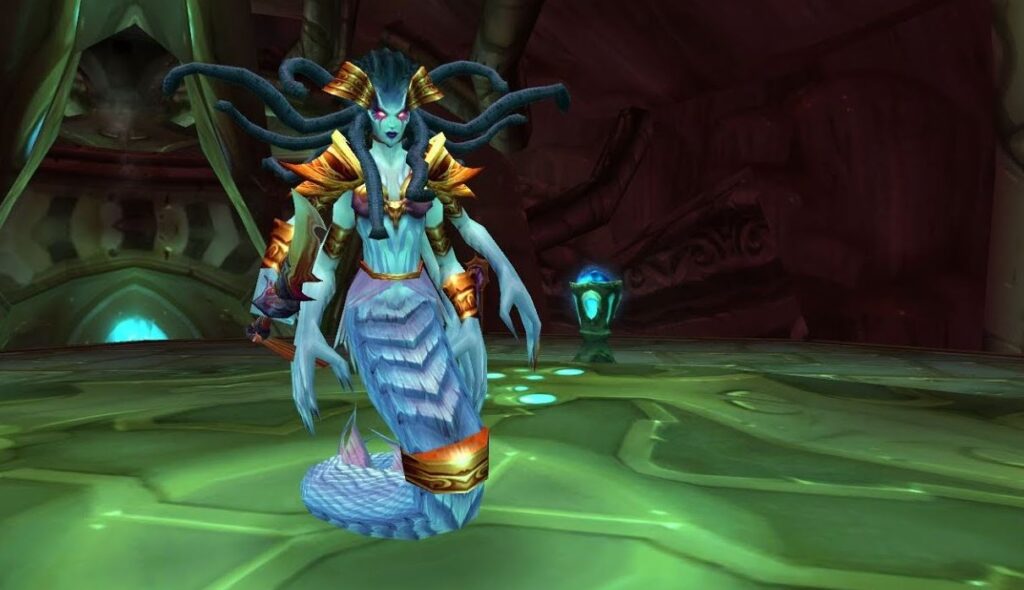
Like Archimonde, a lot of Vashj’s backstory takes place before the events of World of Warcraft. As one of the Overlords of Outland, her role in assisting Illidan would be vital during the Burning Crusade storyline.
Unfortunately, when it came to her colleagues Illidan Stormrage and Kael’Thas Sunstrider, you need to consult a companion book to understand Vashj’s role in everything fully. Within the Burning Crusade specifically, she doubles as a frustrating boss whose difficulty is tied to her RNG mechanics, as well as entrusted to control the waters of Outland.
She also entrusted the naga under her command to enslave the tribes of Broken living in Outland, which is, of course, very bad.
Compared to the other Overlords of Outland, her story’s importance feels the most insignificant. While Vashj may be an important figure in Warcraft history, her role compared to different World of Warcraft villains is pretty minor.
Grand Apothecary Putress and the Royal Apothecary Society
There have been many minor World of Warcraft villains throughout the years. Sometimes, they get some time in the spotlight. One such villain is both Grand Apothecary Putress and the Royal Apothecary Society.
Their plans came to fruition during the famous Wrathgate cinematic during Wrath of the Lich King.
Despite this memorable and iconic moment, Putress and friends are just an opening act for Wrath’s major villains. The Battle for the Undercity quest remains one of the greatest questlines in World of Warcraft. Its climax led players to an instanced version of the Undercity where they did battle against Putress and Varimathras, the latter of which was working with the Burning Legion.
While the Horde dealt with Varimathras and his attempted coup of the Forsaken and Sylvanas Windrunner, the Alliance dealt with Putress. Upon completion, King Varian Wrynn literally throws the dissipated head of Putress at the feet of Thrall. Putress and the Royal Apothecary Society make the list for these iconic moments ahead of their time.
The Iron Horde
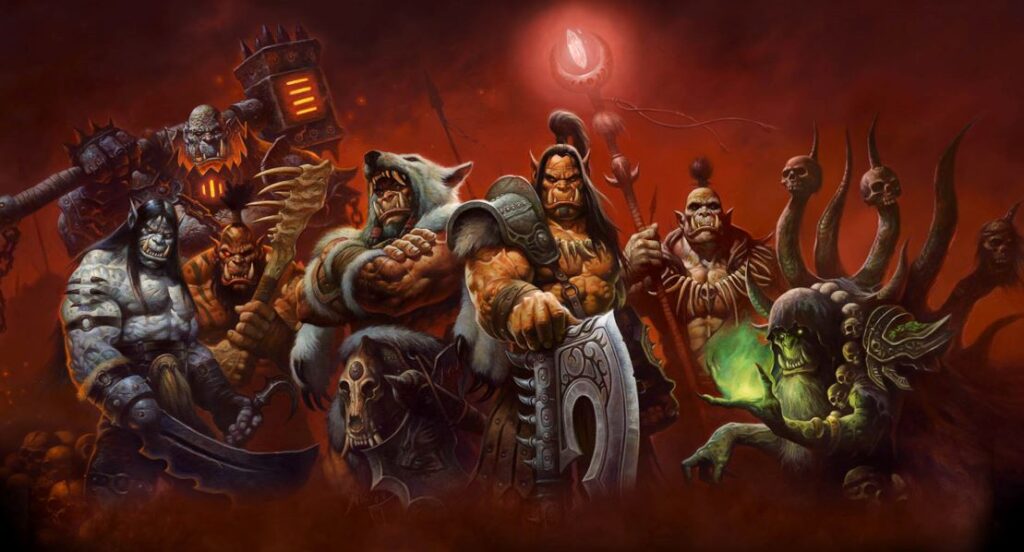
When Garrosh traveled back in time, we got to experience Draenor before it became Outland. With that came the chance of a new future for the orcs of Draenor. Grommash Hellscream refused to drink the blood of Mannoroth, forgoing the corruption of orcs. “We will never be slaves,” he shouted, “but we will be conquerors.”
Conquerors they were as they traveled through the Dark Portal in an attempt to conquer Azeroth. The modern-day Horde and Alliance forces, led by Thrall, Khadgar, and Maraad, traveled back in time through the Dark Portal, setting off the events of Warlords of Draenor.
Standing in our way was The Iron Horde, featuring Grommash Hellscream, Kargath Bladefirst, Fenris Wolfbrother, Azuka Bladefury, Kilrogg Deadeye, Ner’zhul, and Garrosh Hellscream, who helped rally everyone together.
On paper, it was the recipe for an amazing expansion, ripe with important characters in Warcraft lore and memorable encounters. Yet, in practice, things fell a bit short due to the tumultuous release schedule for Warlords of Draenor content. The success rate of The Iron Horde was honestly pretty hit and miss; Kargath died early in the expansion to a lack of fanfare, while Blackhand is one of the more memorable and difficult encounters the game has ever seen.
Garrosh’s death is one of the more well-received moments in the modern World of Warcraft. Grom’s turn into an anti-hero was well done. For the life of me, I have no recollection of Azuka, Kilrogg, Fenris, or Ner’zhul.
This could have been by design, seeing as The Iron Horde were mostly puppets for not just Garrosh but also a certain warlock.
Priscilla Ashvane
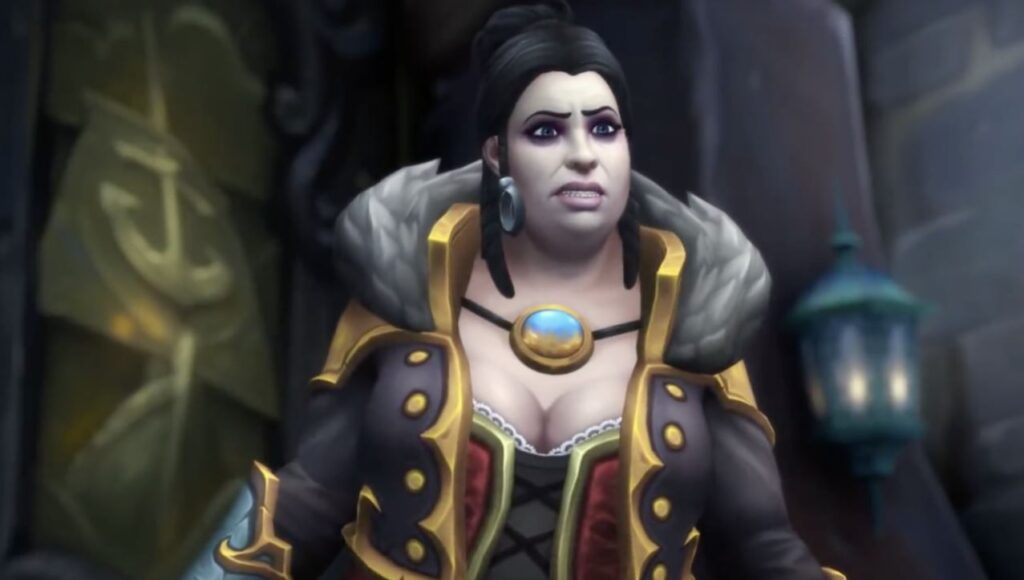
Lady Priscilla Ashvane played a key part throughout the Battle for Azeroth expansion. She was the main antagonist for the Kul Tiran storyline and a raid boss in Eternal Palace.
Before continuing her story, however, it’s important to talk about Jaina Proudmoore, a Kul Tiran native herself, and the invasion of Durator. The battle events resulted in heavy losses of the Kul Tiran fleet, including the death of Admiral Daelin Proudmoore, Jaina’s father. The people of Kul Tiras demanded aid from the rest of the Alliance, but their cries for help were ignored. As a result, they blamed Jaina for what happened.
Back in the present, Ashvane is using this to her advantage. She pleaded to have her labeled a traitor by Lord Admiral Katherine Proudmoore, Daelin’s widow and Jaina’s father. In addition, she used Katherine’s naive loyalty to plan a coup and become ruler of Kul Tiras. The plan comes to a climax during the Siege of Boralus, where Ashvane is unsuccessful in her attempts to eliminate the Proudmoores.
Priscilla’s story doesn’t end there; she is broken out of jail by the Horde and eventually allies herself with Queen Azshara (more on her later). This Alliance proved fruitful for Ashvane; she obtained the power she always desired. Sadly for her, she would be defeated by the Champions of Azeroth in the Eternal Palace raid.
Ashvane proves that Blizzard can create interesting World of Warcraft villains inspired by the franchise’s lore and interwoven into key parts of an expansion’s story and content. Sadly, they couldn’t build on this momentum for the Shadowlands expansion.
N’Zoth
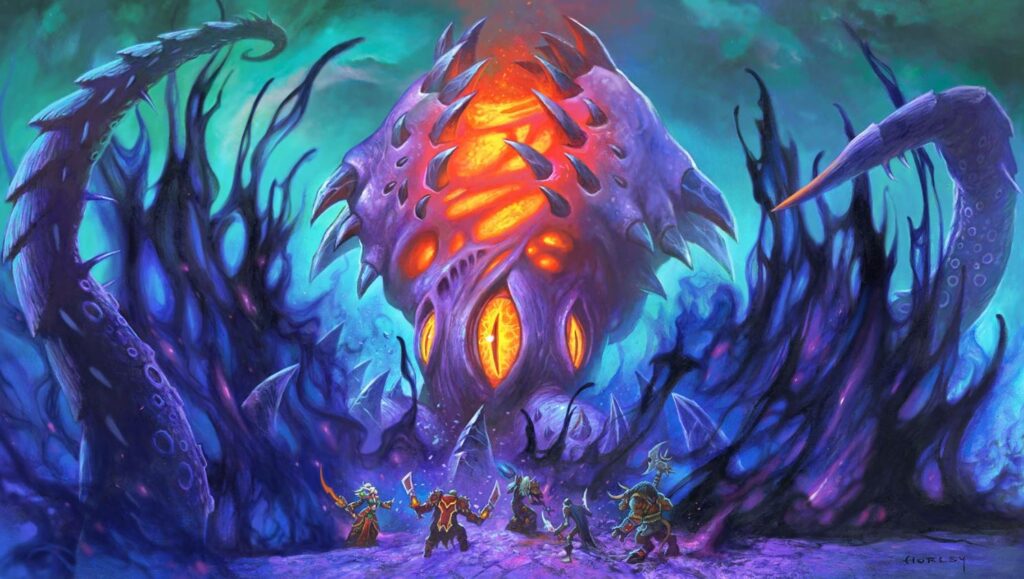
The Corrupter had a major influence in the final patch of Battle for Azeroth. N’Zoth’s presence was hinted at during the questing zones within the expansion. You could argue that the Old God’s presence was felt earlier, as N’Zoth helped corrupt Deathwing. Still, N’Zoth’s official debut was Battle for Azeroth.
Compared to the other Old Gods within the game (minus Y’Shaarj’s heart), N’Zoth has the biggest impact in World of Warcraft. His powers of corruption and madness led to chaos in Azeroth, tying directly into both story and gameplay implications. Yet one can’t help but wonder why N’Zoth doesn’t have the same impact and legacy as the other Old Gods experienced.
N’Zoth may be a victim of too many cooks in the kitchen; Battle for Azeroth featured faction warfare, Sylvanas’ emergence as a villain, and the debut of Queen Azshara. While the Old God’s presence is felt throughout the Kul Tiran storyline, it doesn’t leave the same legacy as C’Thun or Yogg-Saron.
C’Thun
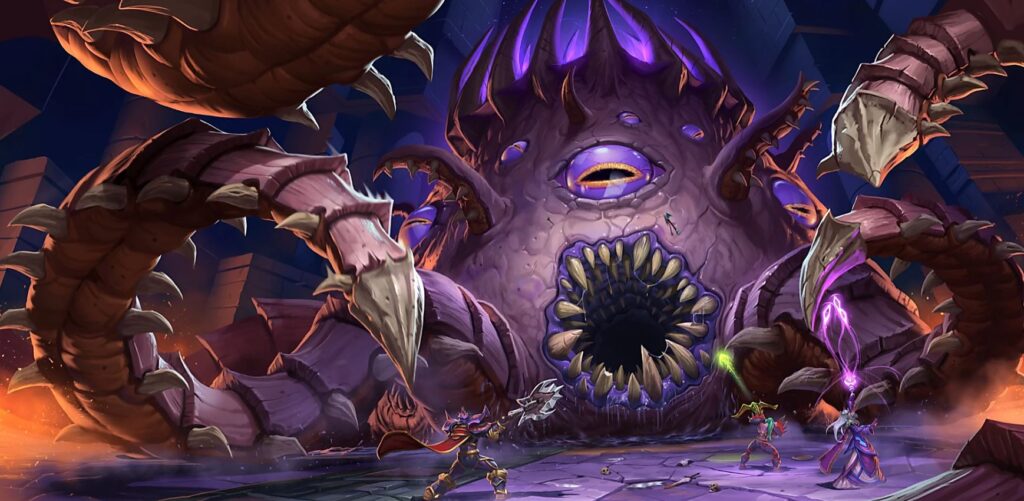
The first Old God encountered in World of Warcraft is C’Thun in the Temple of Ahn’Qiraj. As an Old God, his existence is primarily before World of Warcraft. However, its impact is still relevant because the qiraji race only exists because of C’Thun.
What helps to push C’thun, as well as the other Old Gods, is the continuous influence they enforce over their region. In the case of C’thun, it’s not just the qiraji that helped shape zones and areas that exist within Azeroth. It’s also the impression it makes on the player within the Temple of Ahn’Qiraj raid.
As you’re progressing through the killing of bugs and contemplating the meaning of life, you hear various whispers in your head.
“Your courage will fail.”
“Your friends will abandon you.”
“Your heart will explode.”
“You will die.”
There was nothing like this present in World of Warcraft. It’s a memorable experience that is rarely replicated outside a handful of occasions.
Ragnaros
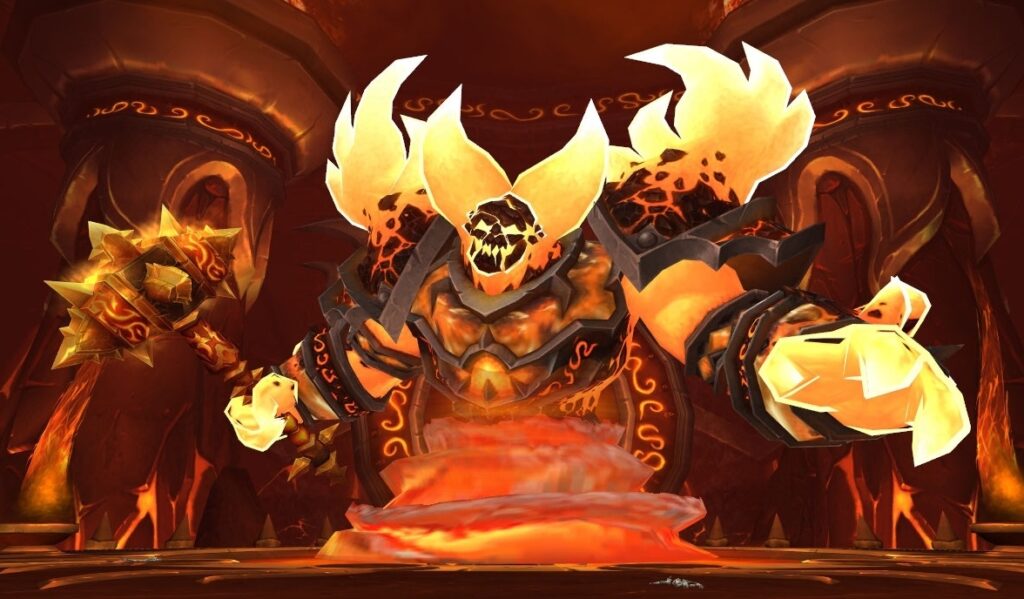
A boss so iconic, we fought him twice.
In the grand scheme of things, Ragnaros doesn’t compare well against other World of Warcraft villains. His impact on the world of Azeroth is legitimate: his rebirth into the planet created Blackrock Mountain. Many Dark Iron dwarves literally worship him. In-game, though, is a different story.
His first appearance is as the final boss of Molten Core. Part of his fame comes from being the ultimate boss of WoW’s first-ever raid. Ragnaros’ story is a bit lost unless you dig deep. Essentially, he’s trying to burn the world of Azeroth and take it for himself. Naturally, the champions of Azeroth defeat him, banishing him to the Elemental Plane and forcing him to sit in the Firelands, waiting.
In Cataclysm, he makes a triumphant return during the Mount Hyjal questline. His second impression on players is far more lasting than his first. As for his encounter in the Firelands, Ragnaros is one of the best encounters the game has ever seen. Still, he is just one of many villains that wish to conquer the world, which results in his low ranking on our list.
Deathwing
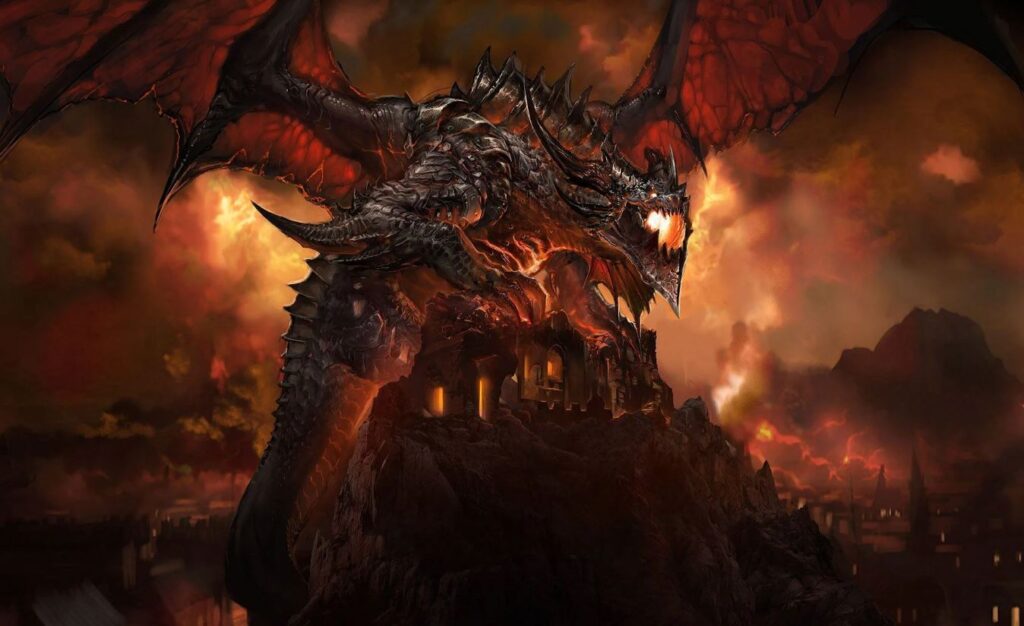
In a past life, Neltharion was one of the five Dragon Aspects and the leader of the Black Dragonflight. Eventually, he was driven mad by the Old Gods, and his return to Azeroth as Deathwing resulted in reshaping the world as we knew it.
Like many iconic World of Warcraft villains, a bulk of Deathwing’s story takes place before the events of the MMORPG. For the base game and first two expansions, he was absent from world events, though his children Onyxia and Nefarian were present. With Cataclysm, Deathwing is back in a big way.
As players quested through Cataclysm content, Deathwing’s presence was constantly felt. He summoned Ragnaros in the Mount Hyjal storyline. He plays an important role during a confrontation with Alexstasza in The Twilight Highlands. In the Dragon Soul raid, there are not just one but two separate encounters featuring Deathwing, culminating in a group effort between players, Thrall, and the other Dragon Aspects.
Yet one can’t help but wonder if Deathwing is somehow disappointing. His demise was met with celebration across Azeroth, promising a new future for the world. Other than The Shattering, there wasn’t the same type of ominous threat lingering over players. Is it possible that Deathwing was stuck in The Lich King’s shadow? Absolutely, but given the warm reception of Yogg-Saron, that’s not a good enough excuse.
Sylvanas Windrunner
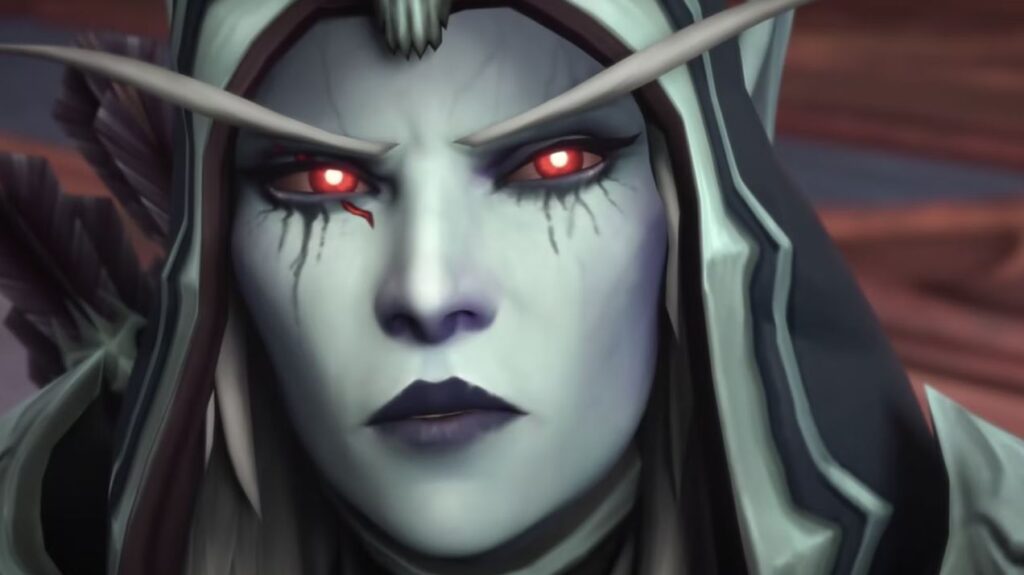
To call Sylvanas the most controversial of all World of Warcraft villains would be a major understatement. Her recent reception, particularly in Battle of Azeroth and Shadowlands, is extremely divisive. In reality, though, we caught glimpses of her heel turn back in Cataclysm.
Sylvanas was under fire after the actions of Putress during the Wrathgate. Her attempts to impress Garrosh by bringing in the Val’kyr as new allies were met with disgust. She was a vital ally of other horde leaders as they battled against Garrosh’s Horde, as well as fought alongside Varian Wrynn on the Broken Shore. Before long, however, things started to change.
She made a pact with Heyla to raise more undead. She aimed to weaken the Alliance following the war against The Burning Legion. This is when things kick into high gear: the burning of the world tree Teldrassil. Thanks to the novel Sylvanas, which came out recently, we learned that she was long working with The Jailer by this point. Why? Because she has been beaten down by a reality that’s been beyond unjust and unfair to her.
Going back to her attempts to bring in the Val’kyr as an ally, the biggest takeaway from that storyline is Sylvanas’ lack of motivation. Arthas is dead, and without him, the Banshee Queen is lost. She was blinded by motivation and passion, willing to do anything to right the wrongs she believed had held her down.
Does this make her a good villain? It makes her a tragic character for sure, with her downfall being that her motivations behind allying with The Jailer were all explained in an accompanying novel instead of in-game.
Gul’Dan
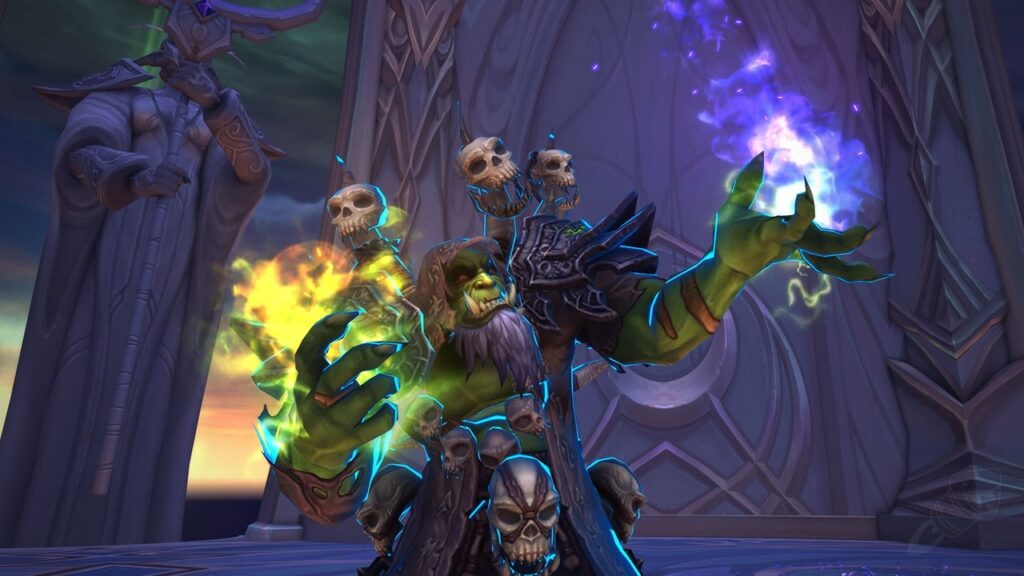
The Lord of the Shadow Council. Leader of the Iron Horde. Betrayer of the Orcs. The first warlock. Gul’dan has many names, but one thing remains the same in both timelines: he always works for the Burning Legion.
When The Iron Horde refused the blood of Mannoroth, Gul’dan would not be denied. He captures Grom at Hellfire Citadel and summons Archimonde, setting into motion the return of the Burning Legion. He delivered the killing blow to King Varian Wrynn. Gul’dan is a bad, bad dude and undoubtedly one of the major World of Warcraft villains.
He helped hold together a story across several expansions, serving as a wonderful bridge between the final chapter of Garrosh’s narrative and the return of the Burning Legion. The return of characters such as Archimonde, Kil’Jaedan, and Illidan makes sense, thanks in part to Gul’dan’s actions and motives.
Yogg-Saron
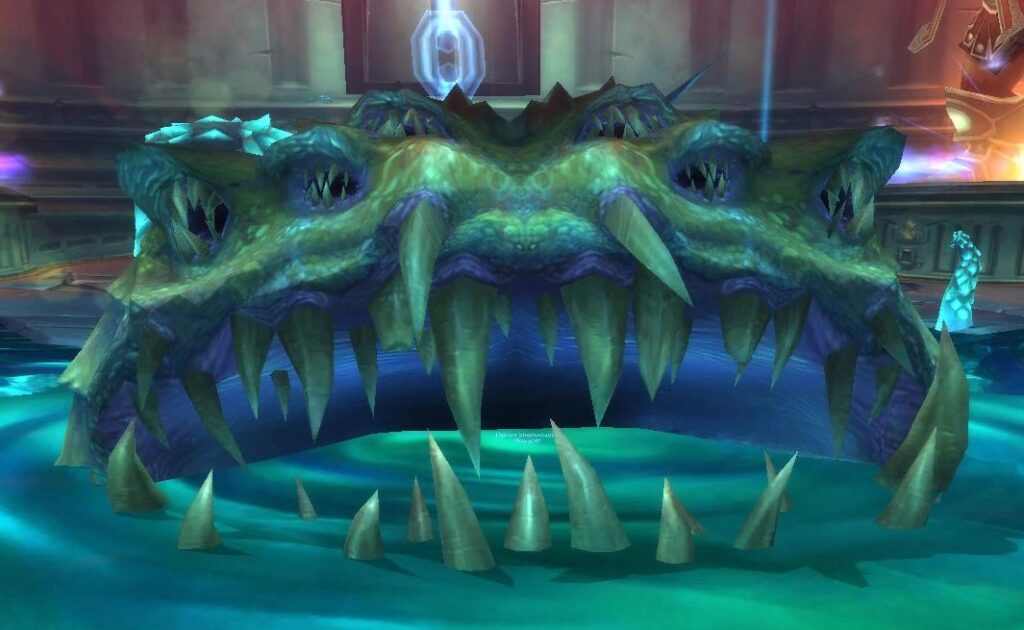
I am the lucid dream. The monster in your nightmares. The fiend of a thousand faces. Cower before my true form. BOW DOWN BEFORE THE GOD OF DEATH!
Yogg-Saron is one of the most iconic World of Warcraft villains in several ways. First and foremost, his introductory quotes as he transitions from Sara to Old God is as memorable as the C’Thun whispers. The encounter itself is regarded as one of the best fights in all of World of Warcraft and one of the most difficult.
In terms of his influence found within World of Warcraft, Yogg-Saron was a major antagonist and part of Wrath of the Lich King. Beyond the current events, Yogg-Saron’s impact is felt throughout Warcraft history. The encounter features a look into the past when it comes to creating the Dragon Soul, the assassination of King Llane, and the Lich King’s torturing of Bolvar Fordragon.
In addition, the aftermath of Yogg-Saron’s havoc is felt through Northrend, as well as all of Azeroth, particularly in Grizzly Hills, when stumbling upon the remains of the world tree Vordrassil. Yogg-Saron also had a hand in helping to create the Emerald Nightmare, which players finally ventured into in the Legion expansion. Because of this, you can easily argue that Yogg-Saron has had the biggest influence in World of Warcraft of all the four Old Gods.
Kael’Thas
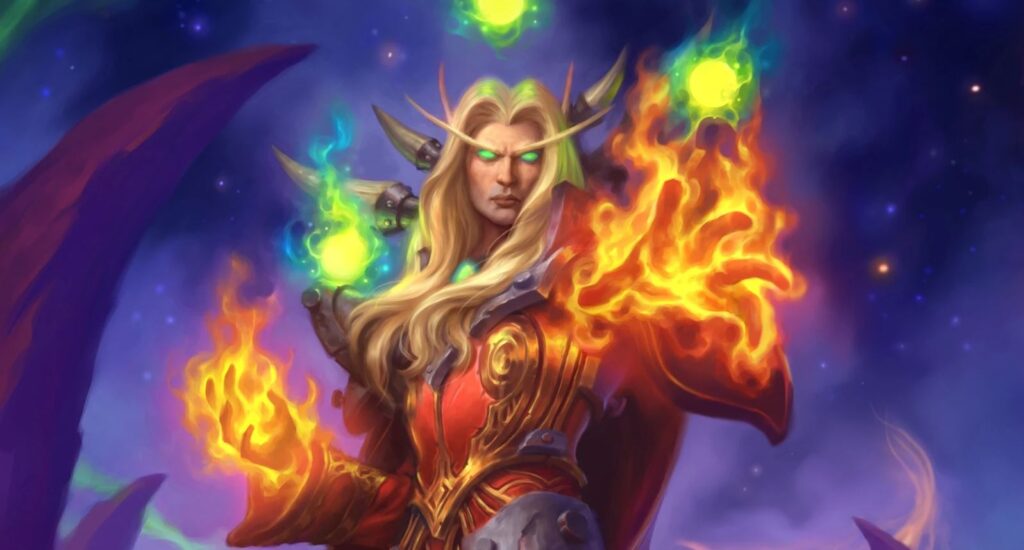
The former Lord of the Blood Elve has an extensive history before the events within World of Warcraft. What makes him one of the best World of Warcraft villains, though, is that you’re still able to discover and experience his legacy and motivations in-game. His impact is everywhere within Silvermoon City, as well as constantly felt in Outland.
What’s truly remarkable with Kael’Thas is the impact of his story. Blood Elves deal with an addiction to magic. He even quotes it at the start of his Tempest Keep encounter: “Energy. Power. My people are addicted to it… a dependence made manifest after the Sunwell was destroyed.”
His tale as a villain is, in some ways, a tragic one. Then after his post-Tempest Keep resurrection, he reinvigorates the Sunwell to summon Kil’jaeden instead of helping his people.
Lei Shen the Thunder King
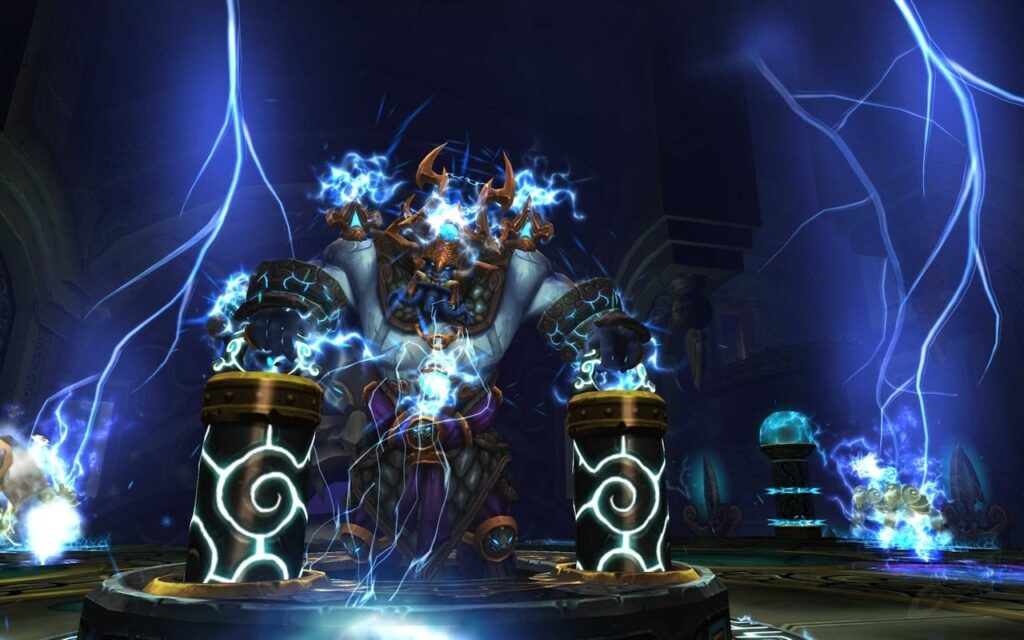
Speaking of some of the best encounters in World of Warcraft, let’s talk about Lei Shen. The Thunder King has left an incredibly lasting impression on WoW fans. The Throne of Thunder raid, where he is the final encounter, is regarded as one of the best raids in World of Warcraft. It launched with patch 5.2 during Mists of Pandaria.
Mists of Pandaria’s main villain, Garrosh, dominated the story. It was the tale of a character that began many years prior, continuing through the Warlords of Draenor expansion. By comparison, Lei Shen’s rise and fall took place entirely before Mists of Pandaria. It was new, original content added to the game from Blizzard. He would, however, eventually be resurrected by the Zandalari trolls, hence why he’s alive when players explore the world of Pandaria.
Despite his resurrection, we were never able to see his threw power.
Lei Shen had a lengthy reign over Pandaria. He built the Serpent’s Spine, isolating the mantid from the rest of the world. He defeated and destroyed the civilizations of both the Jinyu and Hozen races. The Wild God Xuen was unable to defeat Lei Shen in combat. Pandaria wasn’t all Lei Shen was after, though. His Mogu Empire set its sights on Azeroth, allying themselves with the Zandalari tribe to conquer the world.
Yet this would not come to pass; as Lei Shen attempted to take Uldum and its titan machinery, The tol’vir used the Forge of Origination to destroy Lei Shen, his army, most of the Zandalari leadership, and the surrounding areas. The tol’vir sacrificed their land to save the world from Lei Shen and his forces.
It was after this that Lei Shen was resurrected. By the time players encountered him, however, he was weaker. Still, he was incredibly impactful in the world of Pandaria.
Kil’Jaedan
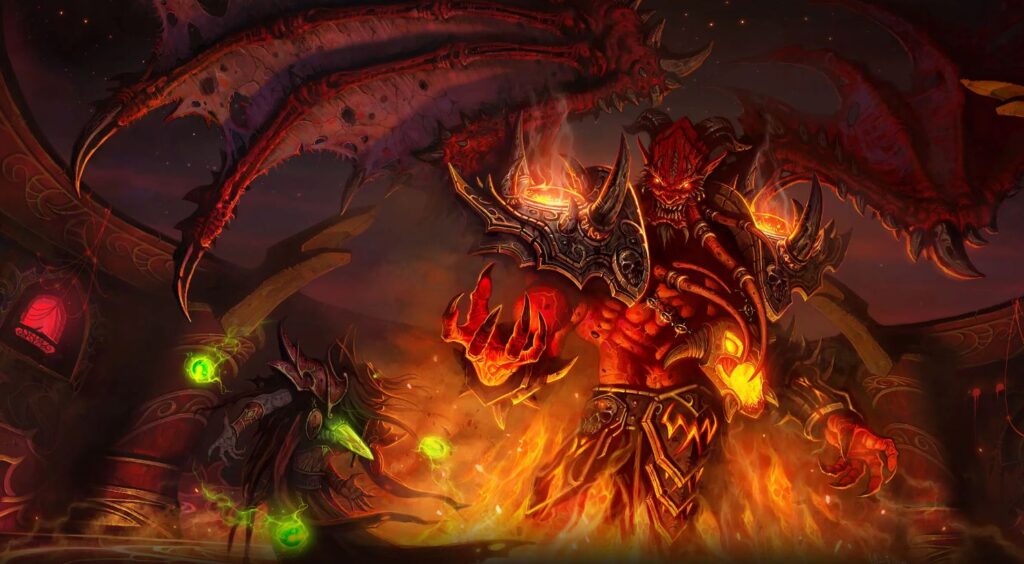
It’s finally time to talk about Kil’jaedan the Deceiver.
The Supreme Commander of the Burning Legion is easily one of the biggest World of Warcraft villains. Under the guidance of the Dark Titan Sargaras, Kil’Jaeden led the Legion to destroy all life on Azeroth.
Our first encounter with Kil’Jaeden comes in Burning Crusade after he convinces Kael’Thas to work on his behalf. When we arrive at the alternative timeline in Warlords and Legion, Kil’Jaeden is pulling the strings. Gul’dan is working on his behalf, aiming to corrupt the orcs, stop the forces of Azeroth, and bring forth the fate his master Sargaeras seeks.
What helps make Kil’jaeden such a memorable villain isn’t just his role as one of the major antagonists throughout all of World of Warcraft, but the relationship between him and Velen. The ability to follow through on an old Warcraft narrative successfully is a testament to the strength of Kil’Jaeden as a character. “I was always envious of you,” he tells Velen with his dying breath. “Your gift. Your faith. Your vision. I never believed that Sargeras could be stopped. Perhaps you will prove me wrong.”
Where other story arcs failed to deliver, Kil’Jaeden’s does.
Illidan Stormrage
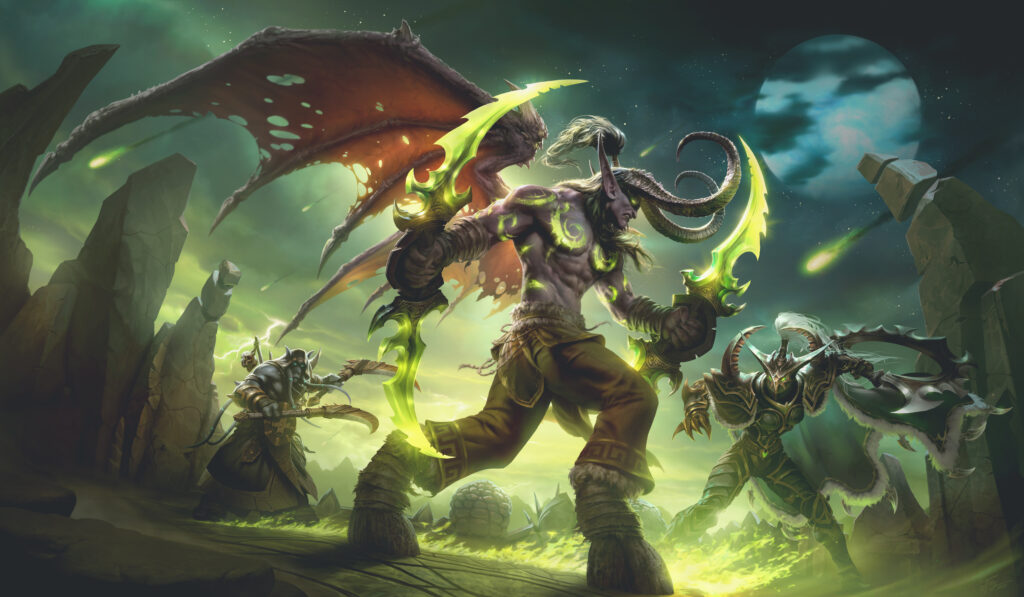
It turns out that we were prepared. One of the greatest World of Warcraft villains of all time, Illidan Stormrage, left a lasting impression in The Burning Crusade. What’s remarkable is that compared to other villains, his screen time is relatively low.
His presence is felt throughout Outland, even when the Burning Legion is front and center. Sure, the threat of invasion is present, but we know Illidan is looming in the Black Temple. What is perhaps most impressive is the amount of storytelling found regarding Illidan during an age where Blizzard’s cinematic storytelling was lacking. We were fed breadcrumbs during the questing experience. We learned about Illidan as we progressed through the content. It climaxed not during the Black Temple raid but during the attunement quest chain. Maiev’s speech resonates with the player, showcasing the moment’s importance.
For a character whose lore and history are essential to World of Warcraft, his role as one of the major World of Warcraft villains is a crowning achievement when you stick to the in-game story and actions.
Onyxia
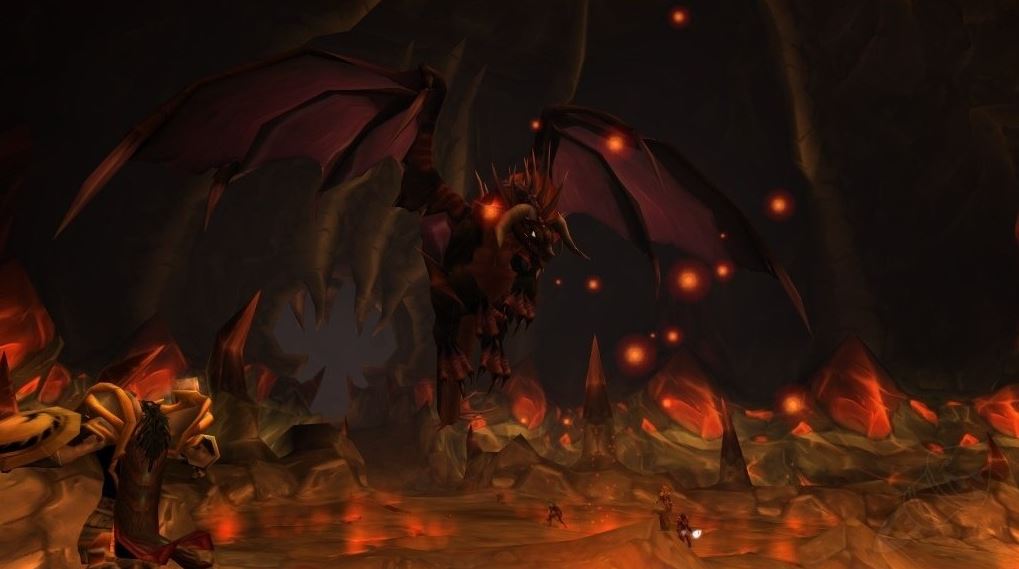
Your impression of Onyxia will depend on your faction of choice during Vanilla WoW. If you were a member of the Horde, she was a raid boss who also helped create one of the biggest memes in all of World of Warcraft. However, if you played on Alliance, you’re very familiar with Lady Katrana Prestor.
While her attempts to claim the throne of Stormwind began before in-game events, her continued legacy levitates her to being one of the greatest World of Warcraft villains of all time. Her continued plans to control Highlord Bolvar Fordragon and influence the people of Stormwind were felt throughout the capital and surrounding lands. It isn’t until the Onyxia Lair attunement chain that Onyxia is unmasked during a memorable scene in Stormwind Keep.
Onyxia would later be revived in the Cataclysm expansion, appearing during the Nefarian encounter in Blackwing Descent. Her actual boss mechanics in both the level 60 and 80 encounters aren’t anything to write home about. However, her place in lore and storyline makes her worthy of appearing on this list.
Garrosh Hellscream
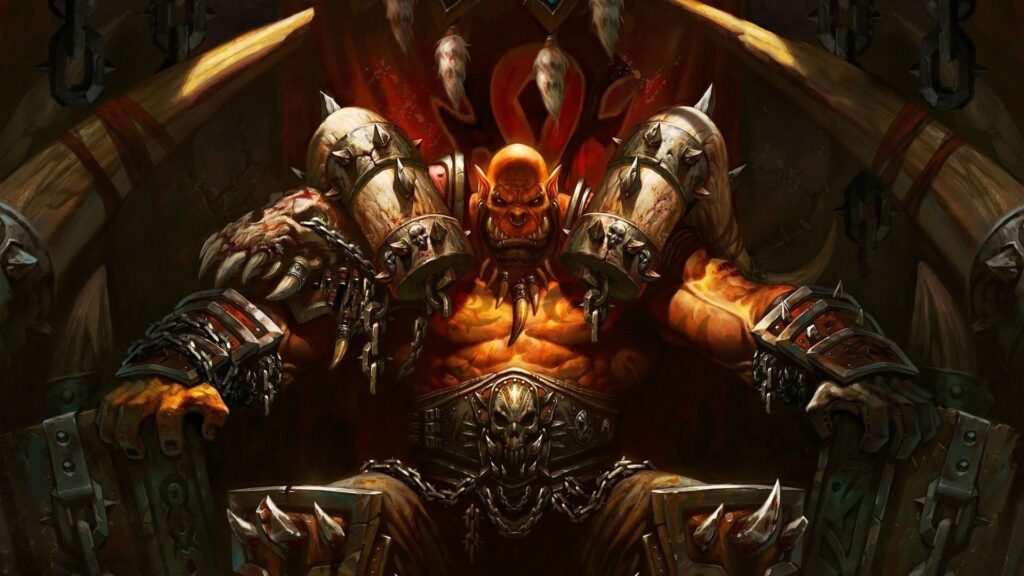
The story of Garrosh Hellscream is told for five expansions, lasting nearly a decade. From the moments we discover the son of Grom Hellscream in Nagrand to his fateful duel with Thrall, Garrosh Hellscream is one of the best World of Warcraft villains the game has ever seen.
His rise to power was met with controversy yet made sense considering the narrative. Thrall saw what could have been with Garrosh, ultimately correcting his mistake by naming him Warchief. All this is after seeing his blind hatred for the Alliance and his hot temper.
Garrosh is responsible for the death of Cairne Bloodhoof, although Magatha Grimtotem had a huge role in Cairne’s death. His vision of a “True Horde” resulted in the expulsion of non-Orcs from Orgrimmar, dividing the races and factions of the Horde. The influence of Y’Shaarj’s heart would only exacerbate his behavior, attitudes, and beliefs. Undeterred by defeat, Garrosh went back in time to join forces with his father and the Iron Horde, setting into motion the events of Warlords of Draenor.
What helps put Garrosh over the top of other villains is his lack of redeeming qualities. Even though Thrall wanted to see the good within Garrosh, we as players knew better. The storyline between Thrall and Garrosh was worth investing in, which had us rooting for Garrosh’s demise.
Sargeras

This is where the list of World of Warcraft villains ends for many. Sargeras is the ultimate bad when it comes to Warcraft. He has made an appearance once during the end of Battle for Azeroth in-game. Despite not being an actual encounter, he left a lasting impression on the world of Azeroth when he stabbed it with his sword.
Despite this single appearance, outside of a voice line where he called Varimathras a failure after the Battle for the Undercity, his impact can be found everywhere. He is the founder of the Burning Legion in his attempt to destroy all life so that it cannot be corrupted.
In terms of impact, drive, and reception, Sargeras is the opposite of The Jailer. Both claimed to be pulling all the strings, putting pieces into action, attempting to save the cosmos and reality from itself. Only one is feared and beloved, while the other is mocked and is in danger of being forgotten.
Ironically, The Jailer may have more screen time and lines of dialogue than Sargeras does. The Titan may be just a big fan of Benjamin Franklin’s quote, “Speak little, do much.”
Arthas Menethil / The Lich King
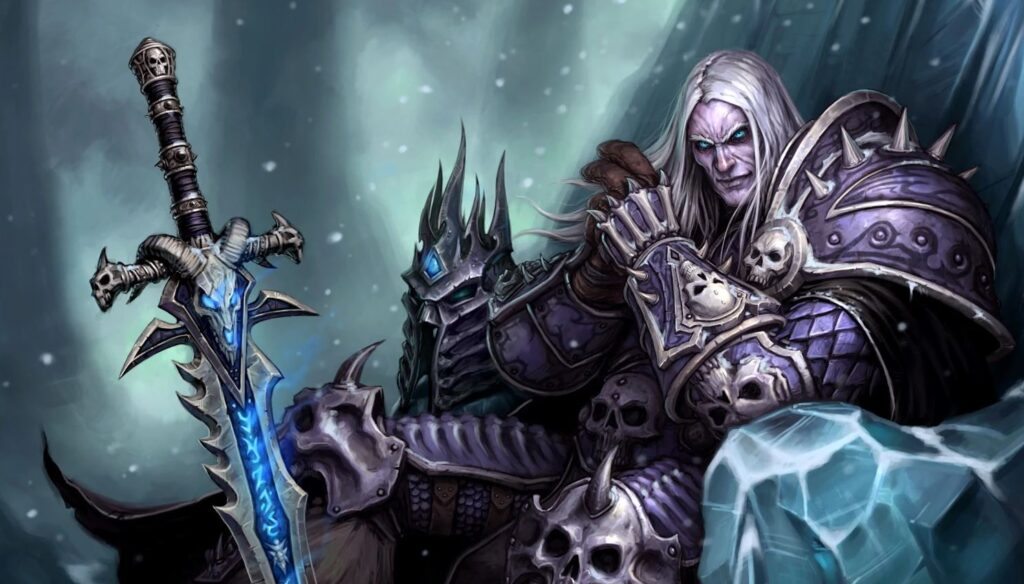
One of the greatest characters in the entire Warcraft franchise, Arthas Menethil’s reign as The Lich King is arguably the greatest of all World of Warcraft villains.
Many WoW fans knew it was a matter of when, not if, we’d travel to Northrend. At BlizzCon 2007, we found out that the game’s second expansion would feature the Wrath of the Lich King.
While that reveal narrated by Arthas is iconic, Wrath’s cinematic trailer starring the villain is one of Blizzard’s best created.
Enough about trailers; what is it that makes Arthas so special? In Wrath of the Lich King, his portrayal made it clear that he was the expansion’s big bad. There was no mistaking it; we wouldn’t hear whispers about what he was up to (looking at you, Illidan). He was a major part of the entire experience. This wasn’t limited to the present, either. The Culling of Stratholme dungeon took players into the mind of Prince Arthas when he first began his heel turn. We were there when Uther and Jaina left him behind as he destroyed the entire city of Straholme. We saw the true evil that lived within him. We felt his power throughout the whole Wrath expansion, from quests and dungeons, all the way to both the Trial of the Crusader and Icecrown Citadel raids.
Blizzard knew Arthas was a big deal and wasn’t afraid to show it. They delivered every step of the way, and we can’t wait to re-live those days again when Classic Wrath eventually launches.
That’s our World of Warcraft villains list. Who’s your all-time favorite? Let us know your thoughts in our comments section.

